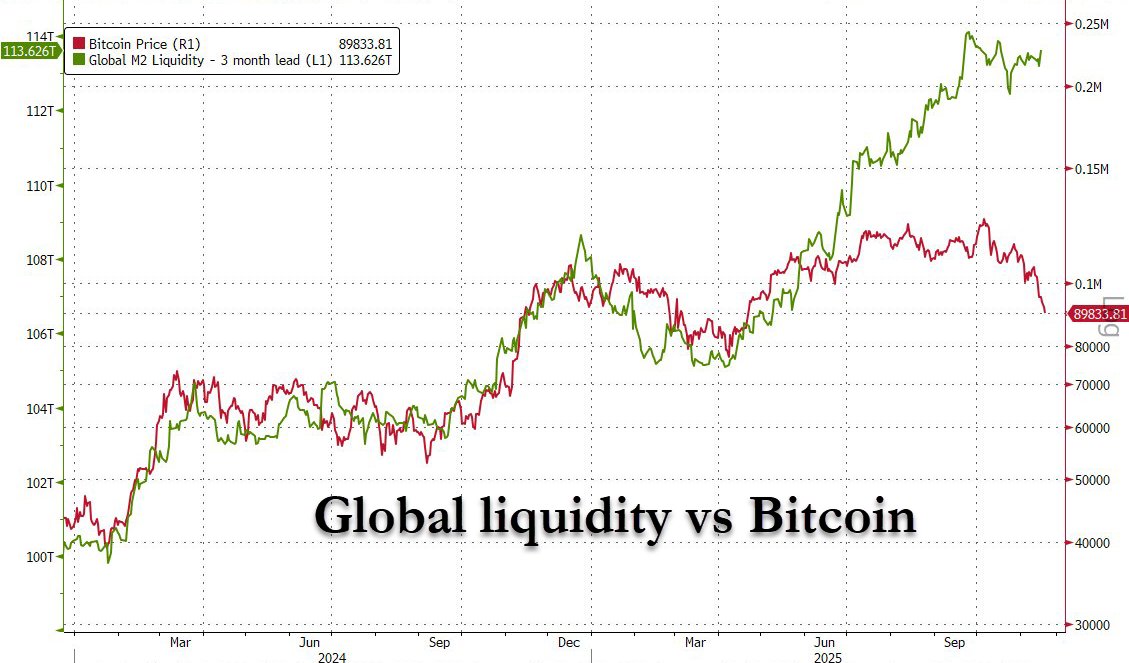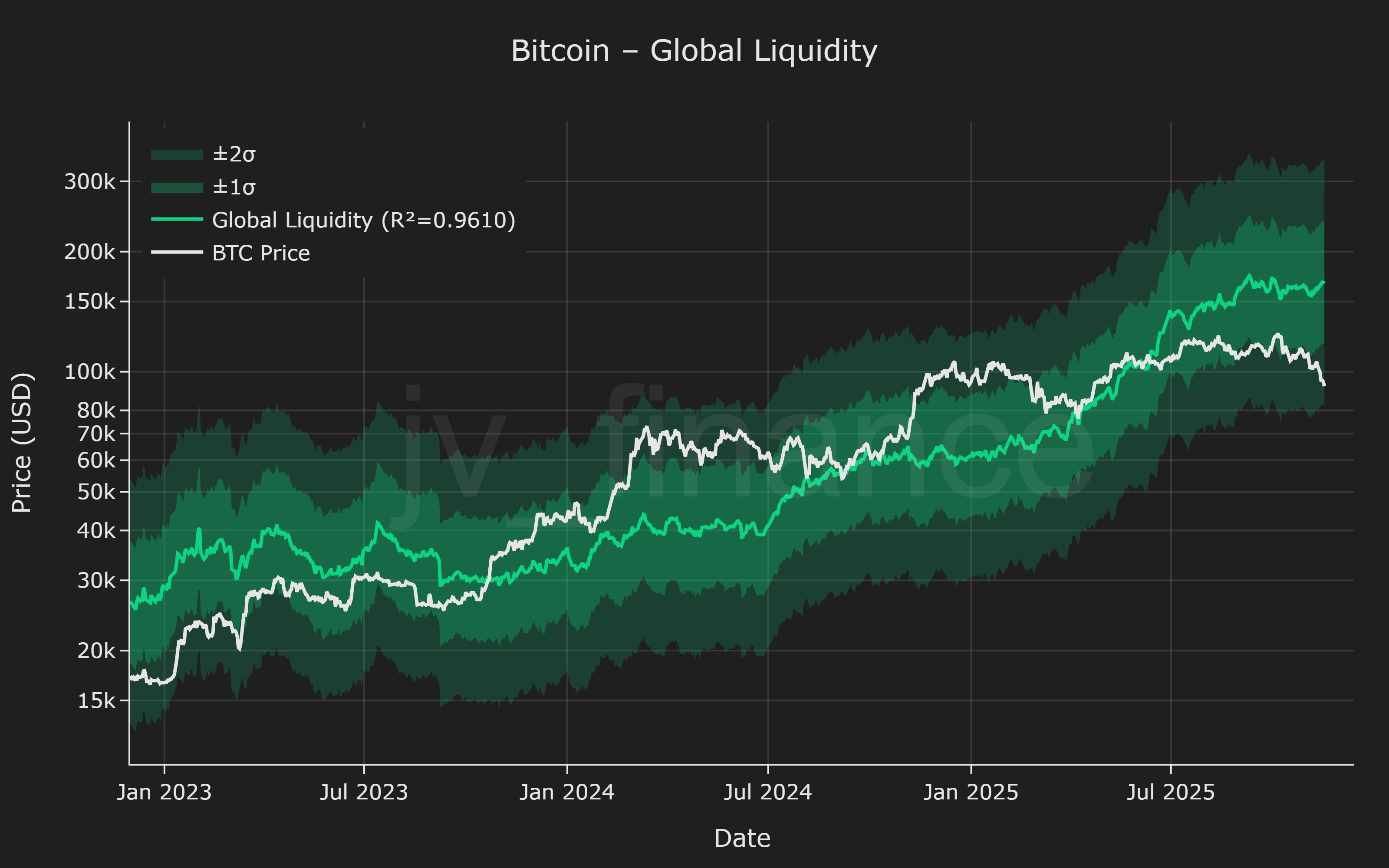Key takeaways:
-
Power-law modeling shows Bitcoin generates strong long-term returns regardless of precise entry timing.
-
Global liquidity sits far above prior-cycle levels, supporting a more favorable macroeconomic backdrop.
-
Bitcoin currently trades at an unusually deep discount relative to its liquidity trends, with its fair value near $170,000.
A new Bitcoin (BTC) simulation suggests that long-term investors may be overly concerned about timing their BTC purchases. In a detailed 10-year model, Bitcoin researcher Sminston With tested how a hypothetical investor deploying $100,000 today might perform under three different entry points: buying at $94,000 price, buying 20% cheaper, or buying 20% more expensive.
The model then projected Bitcoin’s price using the median power-law trend and assumed the investor withdrew 10% of their holdings each year to save or spend.
To further stress-test the outcomes, the study included three exit scenarios: selling at the projected median price in 2035, selling at 20% above it, or selling at 20% below it.
The results were consistently profitable. Even the “unluckiest” path, i.e., buying 20% above $94,000 and selling 20% below the projected median, still returned 300% on the remaining holdings after a decade of steady withdrawals. In total savings, that same investor would end up with 7.7x times the initial capital.
Meanwhile, investors who entered 20% below $94,000 saw final totals ranging from $1.15 million to $1.47 million, depending on their exit. Buying at $94,000 produced outcomes between $924,000 and $1.18 million,
According to the researcher, the takeaway remained simple: while timing can boost returns, Bitcoin’s long-term power-law trajectory does most of the work. With said,
“Don’t stress too much about the entry point. Let time do the heavy lifting.”
Related: $1T crypto market drawdown masks Bitcoin’s strong fundamentals: Coinbase exec
Global liquidity gap reaches rare extremes against Bitcoin
A new macroeconomic lens added further context to the simulation’s long-term optimism. The last time Bitcoin traded near current levels, global liquidity was roughly $7 trillion lower. Currently, total liquidity is estimated at $113 trillion, reflecting significantly looser financial conditions.

From a macroeconomic standpoint, higher global liquidity typically supports risk assets by improving credit availability and investor appetite. While not a guarantee of immediate upside, it signals a more accommodative backdrop compared to the previous cycle.
Analysts are also tracking an unusual disconnect between Bitcoin and global liquidity. According to JV Finance, the BTC liquidity gap has widened to –1.52 standard deviations, a level rarely seen during bull markets.
This metric compares Bitcoin’s market value to where it “should” trade relative to liquidity trends. A deeply negative reading implies Bitcoin is undervalued, not overvalued, against macro conditions.

That gap briefly reached –1.68σ on Nov. 17, the most extreme undervaluation since this bull cycle began. While BTC could still drift lower in the short term, such deviations have historically increased the possibility of long-term upside, with the current fair value for BTC estimated to be around $170,000 based on the liquidity model.
Related: Average Bitcoin ETF investor now underwater as BTC falls below $89.6K
This article does not contain investment advice or recommendations. Every investment and trading move involves risk, and readers should conduct their own research when making a decision.



